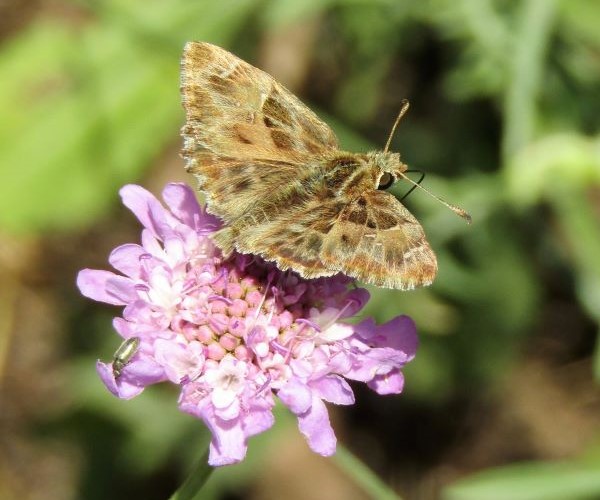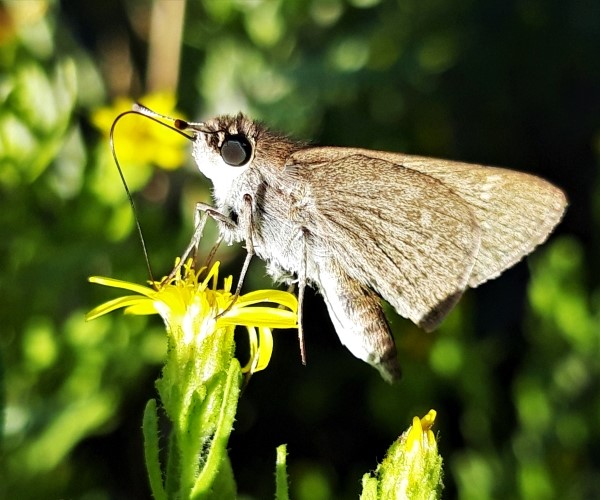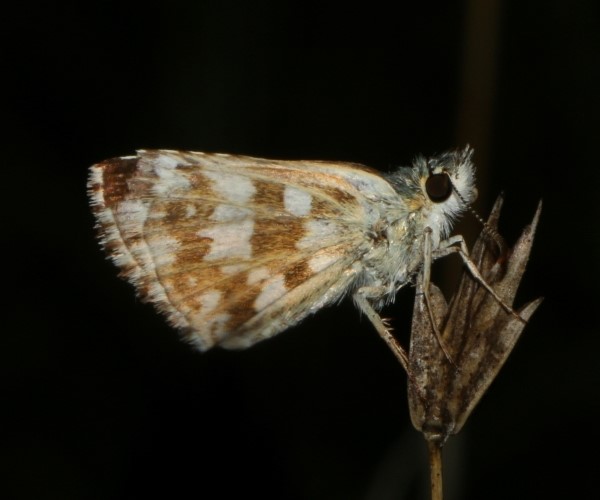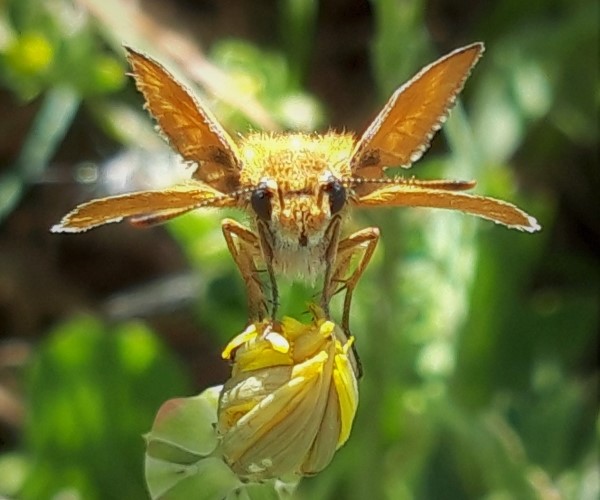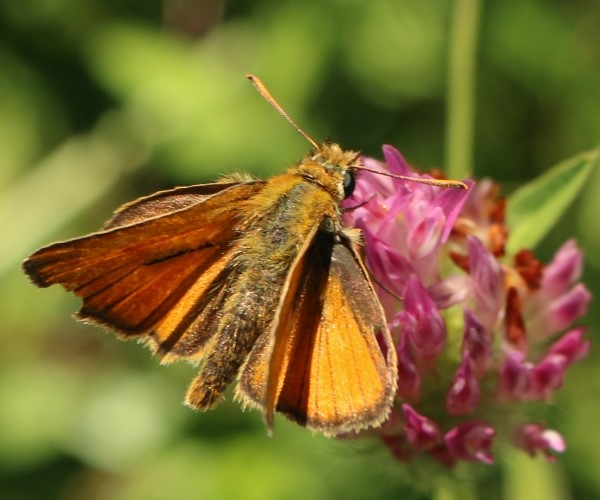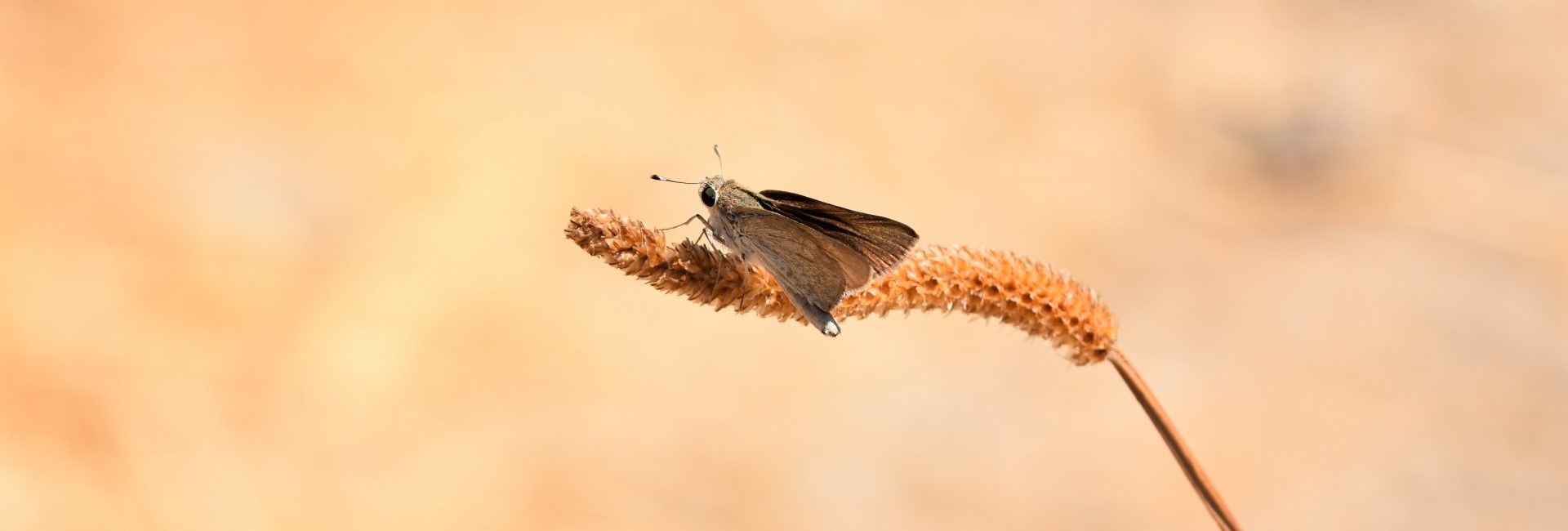
Gegenes pumilio, Crete - photo © K. Bormpoudaki
The Family Hesperiidae (Skippers)
Description
The family Hesperiidae consists of 6 species in Crete, which are small to medium in size. The species in Crete have an average wingspan of 20-30 mm (0.8–1.2 inches). They belong to the following genus:
- Gegenes: 2 similar species
- Thymelicus: 2 similar species
- Carcharodus: 1 species
- Pyrgus: 1 species
30 species of the family Hesperiidae have been observed to fly in Greece.
Approximately 3,750 of the 17,500 butterfly species worldwide belong to this family (Encyclopedia of Biodiversity (Second Edition), 2013).
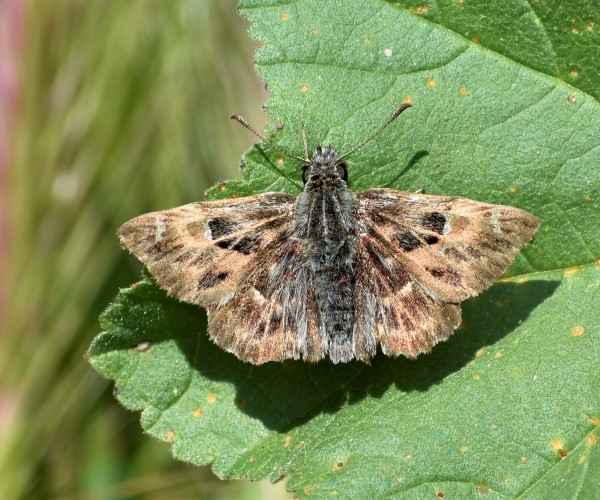
Carcharodes alceae, Crete – photo © K. Bormpoudaki
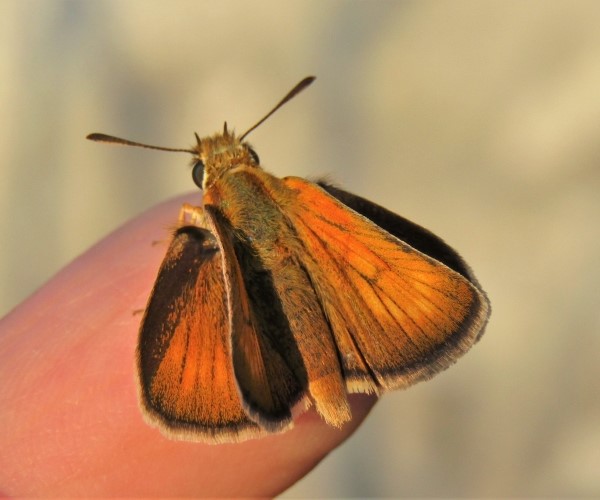
Thymelicus acteon, Crete – photo © K. Bormpoudaki
Appearance
Most skippers are small to medium, usually orange (i.e Thymelicus acteon), brown, black, white, or gray. Skippers have large eyes, short antennae, often with hooked clubs, stout bodies, and three pairs of walking legs.
The head is broader than the thorax, with the antennae widely separated and enlarged distally into a club with its tip attenuated and curved. Adults of most species have long proboscises and feed on floral nectar.
The key characteristic of this family, however, is that all of the veins on the forewing run unbranched from the cell to the wing margin.
Life cycle – Behaviour
They are named Skippers for their quick, darting flight habits. Skippers typically perch with the wings outspread or hold the hindwing out horizontally and the forewing upright, slightly cocked open, or they close both wings above the body like other butterflies, especially when taking nectar.
Males of most species locate mates by perching, though some patrol, especially in the open-winged skippers. Globular eggs are laid singly. The larva feeds within a shelter formed from leaves of the food plant spun together with silk.
Caterpillars have a large head, easily distinguished from most other caterpillars by a constriction at the back. Individual caterpillars create shelters for themselves by folding over a piece of leaf or tying a couple of leaves together and are not generally seen out in the open.
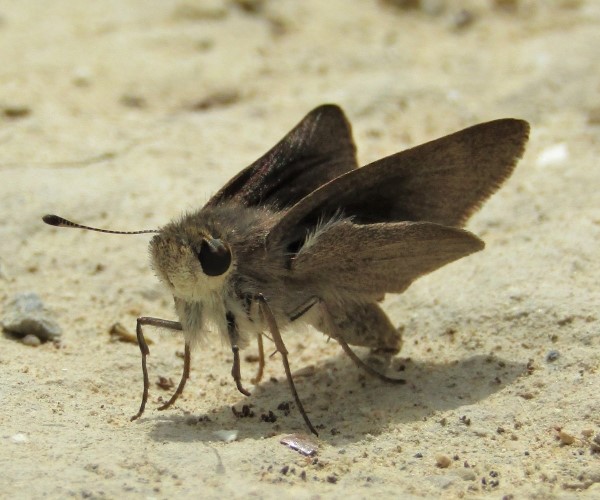
Gegenes nostrodamus, Crete – photo © K. Bormpoudaki
